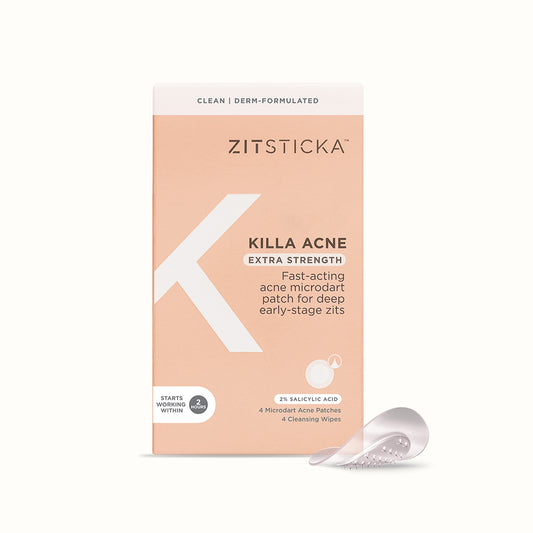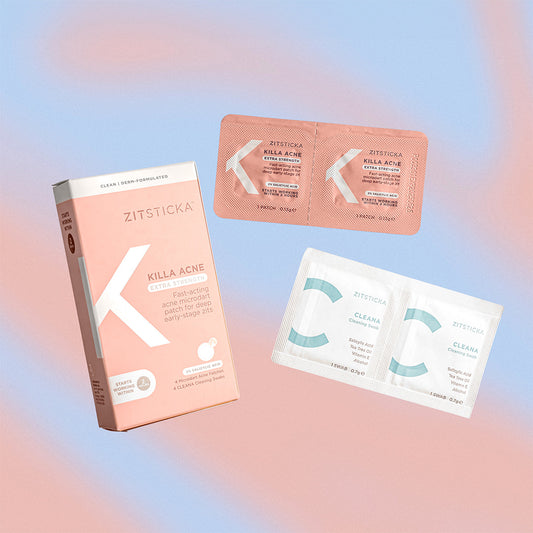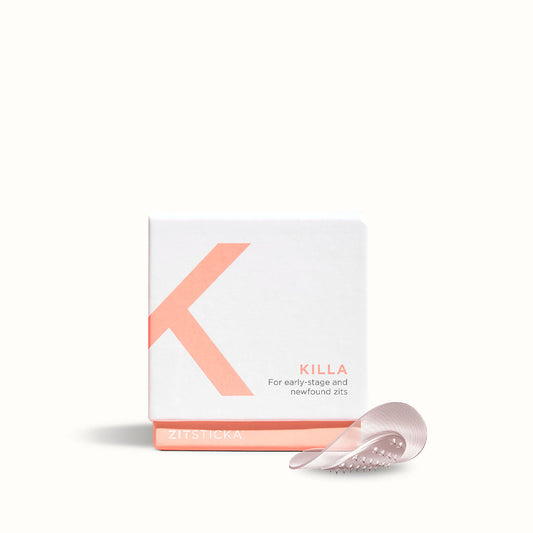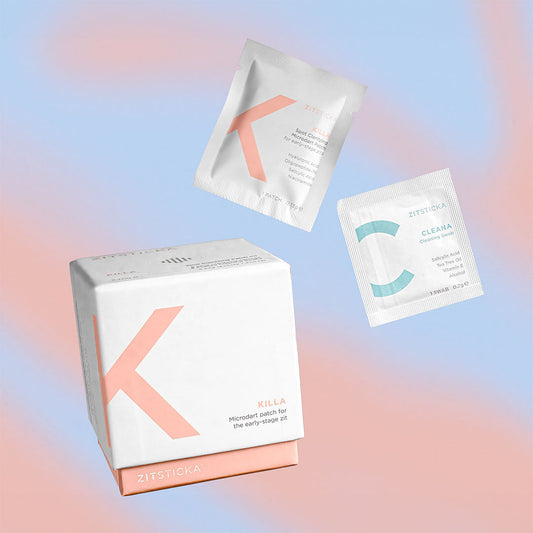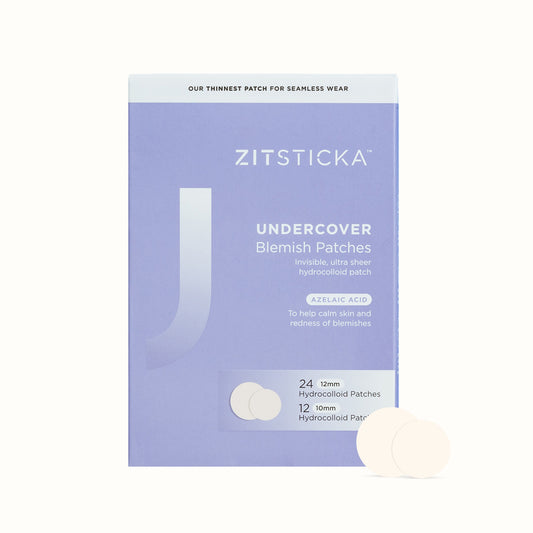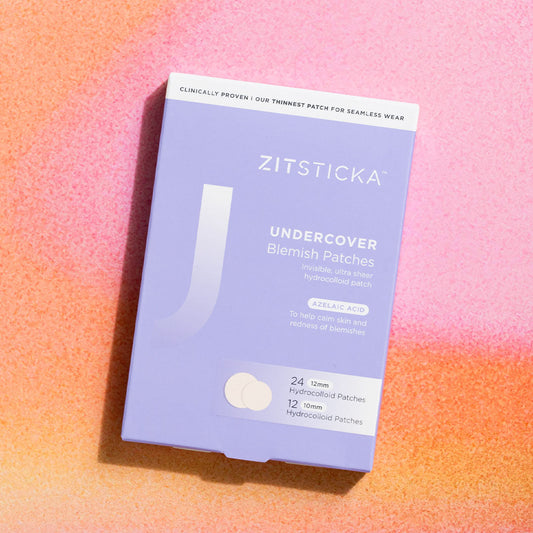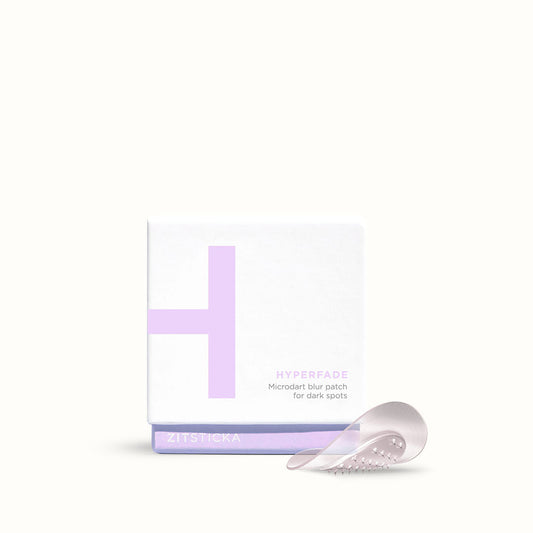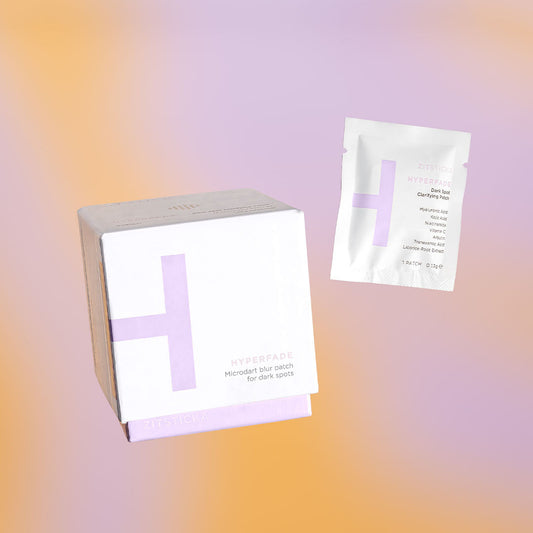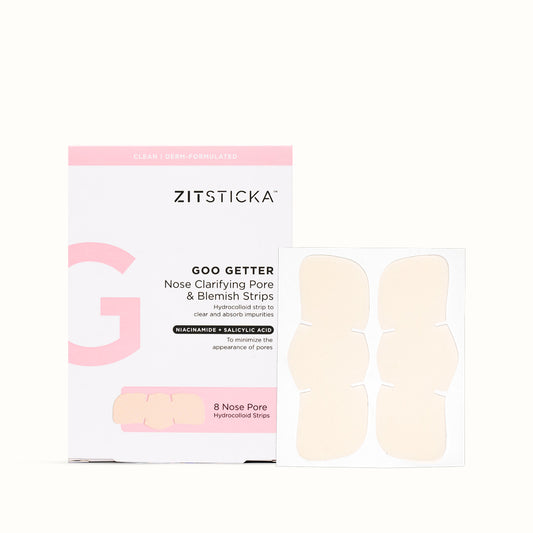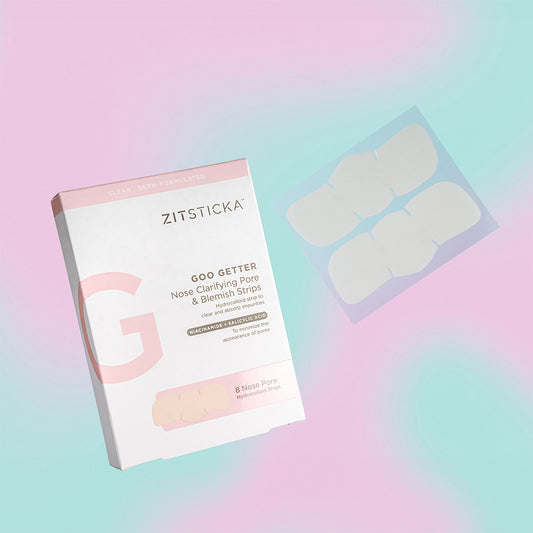By Angelo Landriscina and Trent Andersen
Welcome to the stage, dermatologist Dr. Angelo Landriscina and Trent Andersen: Two friends and collaborators with a wealth of knowledge and experience in 1) having breakouts and; 2) obliterating breakouts. Here, the 31 year-old derm and TikTok aficionado, @dermangelo, delve into an enlightening back-and-forth with the empowering, wisdom-spouting acne-owner, Trent (Little Crusty) about the emotional impacts and social perceptions of dark spots, how they form, and importantly, how to deal with them. Over to you guys!
THE JOURNEY
Trent Andersen: When the skincare industry is talking about acne-prone skin it’s almost always in the context of ridding ourselves of active breakouts. But what are we left with in the aftermath, once all of the dust (active acne) has settled? Discoloration and dark marks. The journey after active acne is under-documented in the skincare community and acne positive community writ large. I’ve struggled with my acne for close to eight years. It has always ebbed and flowed in severity and while I’m always grateful for periods of skin clarity, I still find myself fixating on perceived flaws: Namely the dark spots breakouts leave in their wake. This is precisely why I advocate for folks with acne—or any other perceived imperfections for that matter—, urging them to acknowledge their innate worth and humanity regardless of their skin. If I keep my worth and self-love on hold until I reach a certain aesthetic benchmark, I’ll probably be waiting forever. That is to say, once my acne clears up I meet a second enemy to my self-esteem: My discoloration. PSA: The tendency to fixate on minute “flaws” in my skin doesn’t disappear just because my active breakouts have.
Angelo Landriscina: I always say that acne runs deep. I know from my own experience with it and from the countless patients I’ve helped get their acne under control. It has a lasting effect on those who suffer with it whether it be emotional or physical, in the form of postinflammatory hyperpigmentation (PIH) or even acne scarring. I see it time and again in clinical practice—even after my patients achieve “clear skin,” they still lack confidence due to the sequelae of their acne. Also, when it comes to PIH, we know that it affects patients with skin of color at a far greater rate. While we don’t have clear data about disparities in these populations as it relates to acne specifically, we do know that people of color face many more barriers to dermatologic treatment in general. It’s easy to see how POC with acne could get stuck in a breakout-PIH cycle with little relief in sight.
THE TREATMENT
TA: Dermatologists and estheticians are amazing resources that have helped me improve my acne and discoloration—but I also couldn’t have made it this far without a solid skincare routine. One of the keys to treating the dark marks left behind by breakouts is daily sunscreen of SPF 30 or greater. When I worked in Ulta, I always told my clients they needed to develop daily sunscreen habits in tandem with their targeted treatments for discoloration or else their work is potentially counterintuitive.
AL: I couldn’t agree with you more! I always tell my patients that sun-smart measures including daily SPF, shade-seeking and protective clothing are the cornerstone of any regimen for hyperpigmentation. If you’re not using daily SPF, everything else will be in vain. In addition to this I recommended multiple actives that address the various steps in melanin synthesis and transfer in order to reinstate skin tone more quickly.
THE GOODS: HYPERFADE
TA: In a market where most dark spot solutions are meant for the entire face, I appreciate that HYPERFADE works as a targeted, deep-diving spot treatment. The 24-self dissolving microdarts ensure the research-backed ingredients get to work at fighting post-zit damage from the inside out. After three patches I’ve seen impressive progress on a particularly stubborn post-acne dark spot. Lemme pass the mic back to our favorite TikTok Dermatologist to tell us more about the ingredients that make HYPERFADE such a powerhouse product.
AL: Because hyperpigmentation can be so stubborn, and melanin synthesis has many steps, using multiple ingredients with different mechanisms is important for getting rid of hyperpigmentation fast. Both ascorbic and kojic acids inhibit an enzyme called tyrosinase—the main enzyme involved in turning amino acids into melanin pigment. Arbutin both inhibits tyrosinase and prevents melanosomes—the cellular vehicles for melanin—from maturing. Niacinamide prevents the transfer of those same melanosomes to other skin cells. Licorice root contains compounds that both inhibit melanin production and promote its dispersion. Tranexamic acid is a compound that has been around for decades and was first used to prevent bleeding—it helps to prevent UV radiation’s melanin-inducing effect and is especially exciting to see in a skincare product.
Confused about the difference between hyperpigmentation and scars? Read this!

